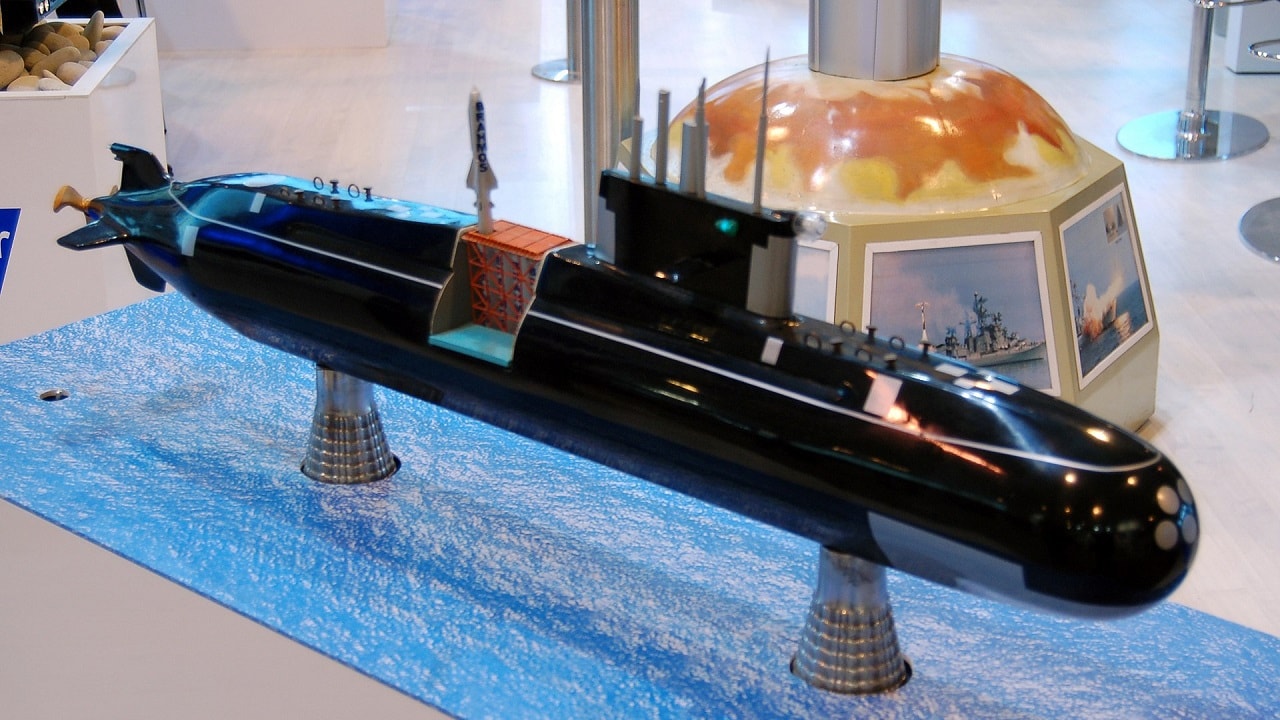The Russian Navy could be best described as a mix of old and new – a point reinforced by the announcement that its newest Project 677 Lada diesel-electric submarine, B-586 Kronshtadt, will be equipped with Kalibr (Russian for “Caliber”) cruise missiles.
The submarine is only the second Lada-class boat to be built of a planned dozen, but the platform was developed in the 1990s, while her hull was actually laid down in July 2005 and only launched in September 2018.
After years of delays, due to issues with the lead vessel of the class, B-585 Sankt Peterburg (Russian for “Saint Petersburg”), construction only resumed in 2013 and B-586 is still yet to enter service.
But when she does, the submarine will be armed with the powerful 3M-54 Kalibr (NATO reporting names “SS-N-27 Sizzler and “SS-N-30A”). The missile can carry a warhead weighing up to 500 kilograms (1,100 pounds) of explosives including a thermonuclear warhead.
“The first issue on the agenda is the construction of the large submarine Kronshtadt that will enter service with the Northern Fleet. The ship is set to feature Kalibr cruise missiles, the latest radar, sonar and navigational systems. This will considerably boost its combat efficiency,” Russian Minister of Defense Sergey Shoigu said during a conference call with military commanders on Tuesday, the state media outlet Tass reported.
During the conference call, military leaders also discussed measures to ensure the vessel’s timely delivery to the Russian Navy, specifying the timeframe of its state trials and its entry into service.
Lada-class in the Spotlight
The Project 677 Lada diesel-electric powered boats are fourth-generation conventional subs and were developed as a highly improved version of the Project 636 boats (NATO reporting name “Kilo-class”), but with better acoustic signature, new combat systems, and possibly air-independent propulsion.
Each displaces 1,750 tons in their surface position – about 25 percent less than the predecessor Kilo-class submarines. However, its capabilities are reported to be greatly enhanced, and the boats can accelerate to 21 knots in their submerged position.
It is also the first usage of a mono-hull design by the Russian Navy for an attack submarine since the 1940s.
The Project 677 Lada submarines have a crew of 35, and each is equipped with the Litiy (Russian for “Lithium”) automated combat control system. Being conventionally powered, the boats have an endurance of just 45 days.
In addition to the Kalibr cruise missiles, the Lada-class submarines are armed with six 533mm (21-inch) torpedo tubes and carry sixteen torpedoes or surface-to-surface missiles (SSM); or 44 mines and ten Kalibr cruise missiles.
The class was designed for anti-submarine warfare (ASW), and anti-surface warfare (ASuW), as well as for the defense of naval bases, seashore,s and sea lanes; and for conducting reconnaissance.
The Project 677 lead diesel-electric submarine Sankt Peterburg entered service with the Russian Northern Fleet in September 2021 after years as an experimental platform. Three additional boats of the class are now under construction, while a fourth is now on order.
A variant of the Project 677 submarine was developed as the Project 1650 Amur-class, which is offered for export.
MORE: F-35I: Israel Has a Stealth Fighter America Dreams Of
MORE: H-20: China Is Building a New Stealth Bomber
MORE: Is Russia’s Su-57 Felon Stealth Fighter a Total Bust?
MORE: Merkova: Israel Has A Super Tank
Author Experience and Expertise
A Senior Editor for 19FortyFive, Peter Suciu is a Michigan-based writer. He has contributed to more than four dozen magazines, newspapers, and websites with over 3,200 published pieces over a twenty-year career in journalism. He regularly writes about military hardware, firearms history, cybersecurity, politics, and international affairs. Peter is also a Contributing Writer for Forbes and Clearance Jobs. You can follow him on Twitter: @PeterSuciu.

